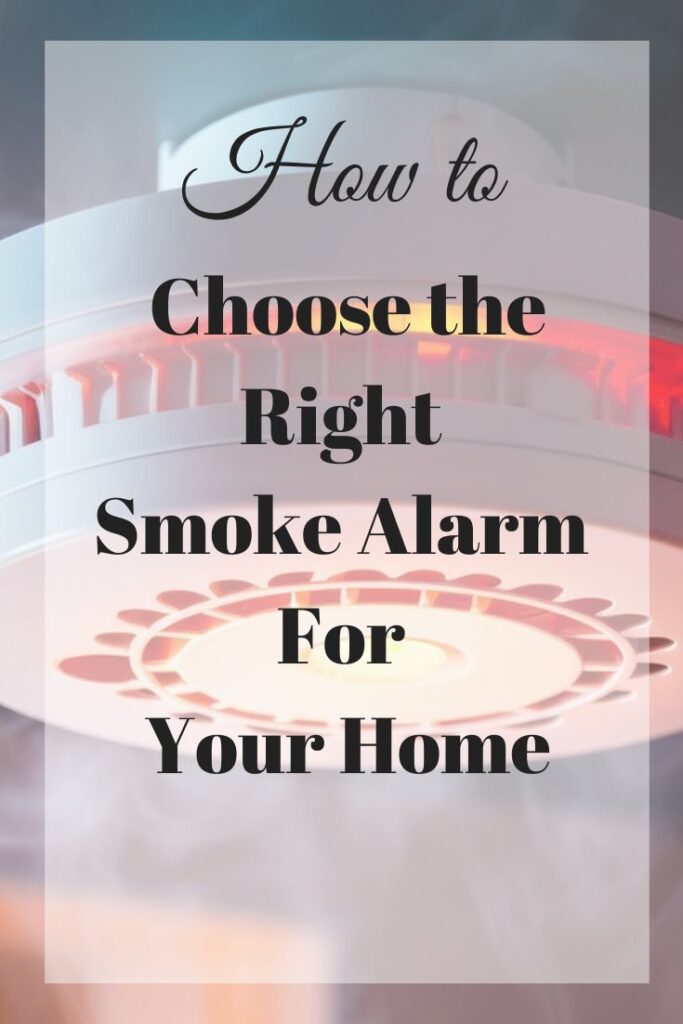
This is a Contributed Post
HOW TO CHOOSE THE RIGHT SMOKE ALARM FOR YOUR HOME
Fires are one of the biggest safety concerns in homes, with the fire and rescue services (FRSs) in England reporting 143,625 fires in the year ending September 2023. This means that it’s important to put the right fire prevention measures in your home, and one of the most important ones is having high-quality smoke alarms.
Smoke alarms play an important role in fire safety as they can detect and alert you when they note that there’s a fire in your home. You will then have time to deal with it or evacuate. However, there are different considerations for smoke alarms, starting with how they work and where you want to use them. So how can you choose the right one for your home? Here is how to choose the right smoke alarm for your home.
Understand the Different Types of Smoke Alarms
The first thing you need to do is know the options available to you in terms of how different smoke alarms work. When you group them in a broad manner, below are the three main options:
Ionization Smoke Alarms
These are the most common types of smoke alarms as they are both cheap and highly responsive. They are made with a special chamber that has a radioactive material that ionizes the air within this chamber. When smoke particles enter the chamber, the flow of ions in the chamber is disrupted, making the alarm sound.
These alarms are quite effective at detecting flaming fires in kitchens and workshops, although they are also vulnerable to false detections.
Photoelectric Smoke Alarms
Photoelectric smoke alarms are also referred to as optical smoke detectors. These alarms work by using an LED light source and a light sensor placed at an angle. When smoke particles enter the detection chamber, they scatter the light beam, making it deviate from its original path. This then triggers the alarm.
Unlike ionization smoke alarms, optical smoke detectors are more effective at detecting slow-burning, smouldering fires. They are therefore suitable for areas such as bedrooms and living rooms as they have furniture, bedding, and electrical appliances.
Heat Detection Smoke Alarms
Heat detection smoke alarms don’t rely on smoke but rather the temperatures produced by fires. These alarms use Rate-of-rise (ROR) detectors to measure a sudden increase in temperature, such as a rise of more than 5 degrees Celsius within 3 minutes. They also come with a fixed temperature that triggers the alarm when it’s exceeded.
Heat detection smoke alarms are more suitable for areas where smoke particle detection may be prone to false alarms. These include kitchens, garages, workshops, and laundry rooms.
Power Source: Battery-Powered or Hardwired Smoke Alarms?
Another consideration you need to make is how you prefer to power the smoke detector. The first option here is going for a battery-powered smoke alarm. These are quite common as they are easy to install and can be installed anywhere. If your house doesn’t have a mains connection for the smoke alarm and you don’t want to start establishing one, this may be the way to go. However, keep in mind that you will need to change the batteries over a fixed schedule, such as every six months or once a year.
The other option is going for a hardwired smoke alarm, which is usually connected to the home’s electrical system. This will mean that you won’t need to change the batteries every now and then, and the alarms also come with a backup battery in case of power loss. However, you may need a qualified electrician to install it for you.
Do You Need Interconnectivity?
The other major consideration you need to make when choosing a smoke detector is whether you want it to be interconnected with other detectors and home safety measures. In such a system, when one alarm goes off, the others also sound to alert people in every room. This helps take the necessary fire safety measures as early as possible, especially in multi-story homes.
If you want an interconnected smoke alarm, you will need to choose one that provides the capability. On top of that, ensure that the one you choose is compatible with the others or your network of home safety devices.
YOU MAY ALSO LIKE:
Home Design Tips for Expecting Parents
Top Tips for Buying Your First Home

